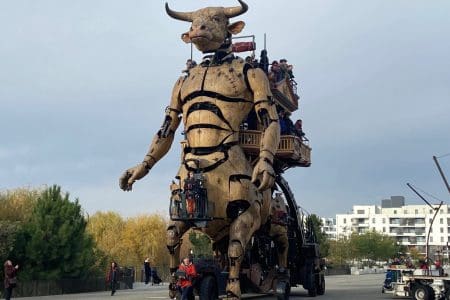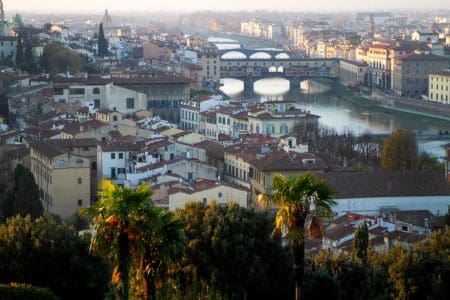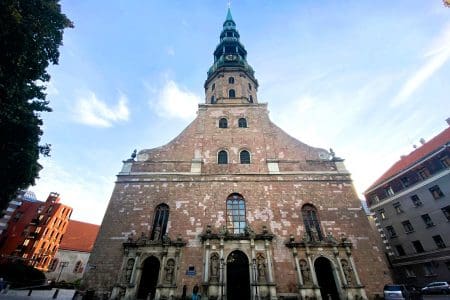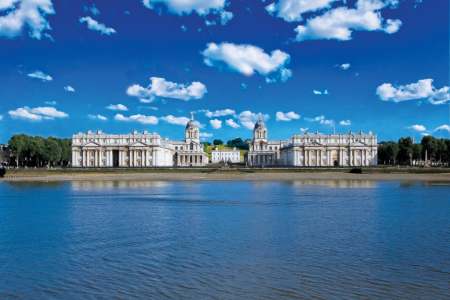Given that the great river flows through ten countries in central Europe, there are several fine cities along it that might lay claim to the title ‘The Jewel on The Danube’. Elegant Vienna naturally would be one, Bratislava another for its quaint charms, but it is the sheer grandeur of Budapest that stands out above all the others. Eileen had been before, but I’d never set foot before in the ‘Paris of the East’, and was immediately entranced.
The physical scars of Hungary’s troubled 20th century history – the brutal battle across the city between German and Soviet forces in 1944/45, and the ruthlessly suppressed revolution here in 1956 – seem few and far between as you walk Budapest’s imposing streets. For much of the time you feel you could be back in the late 19th century, the city’s Golden Age, when the great French architect Baron George-Eugene Haussman was planning the city’s grand avenues and boulevards, while his near namesake Buda-born Alajos Hauszmann was designing its spectacular buildings, such as Buda Castle, the Palace of Justice and the Parliament.
Anantara New York Palace Hotel
As it happens, we were booked in to stay at a hotel whose building is one of Hauszmann’s finest creations. The Anantara New York Palace Hotel, on Erzsebet Korut Boulevard, was, in its first incarnation in 1894, the European headquarters of the New York Life Insurance Company, probably the most important insurance company in the world at that time.
Hauszmann and his architectural collaborators Floris Korb and Kalman Giergi pulled out all the stops to give the building the style they felt their prestigious clients would approve of, drawing on Italian Renaissance, Baroque, Gothic and Art Nouveau. There was even – and it is still there today – a statue of a ‘Lady of Liberty’ to make them feel at home, atop an eagle on a corner of the building’s roof.
The magnificent exterior of the building still remains, replete with ornate towers, imposing statues and intricate carvings. Inside the insurance employees used to work on the upper floors and if you close your eyes you can imagine them at rows of desks, the clattering typewriters (invented in the 1870s) echoing around the grand marbled hall while suited clerks scurry about with pieces of paper in their hands.
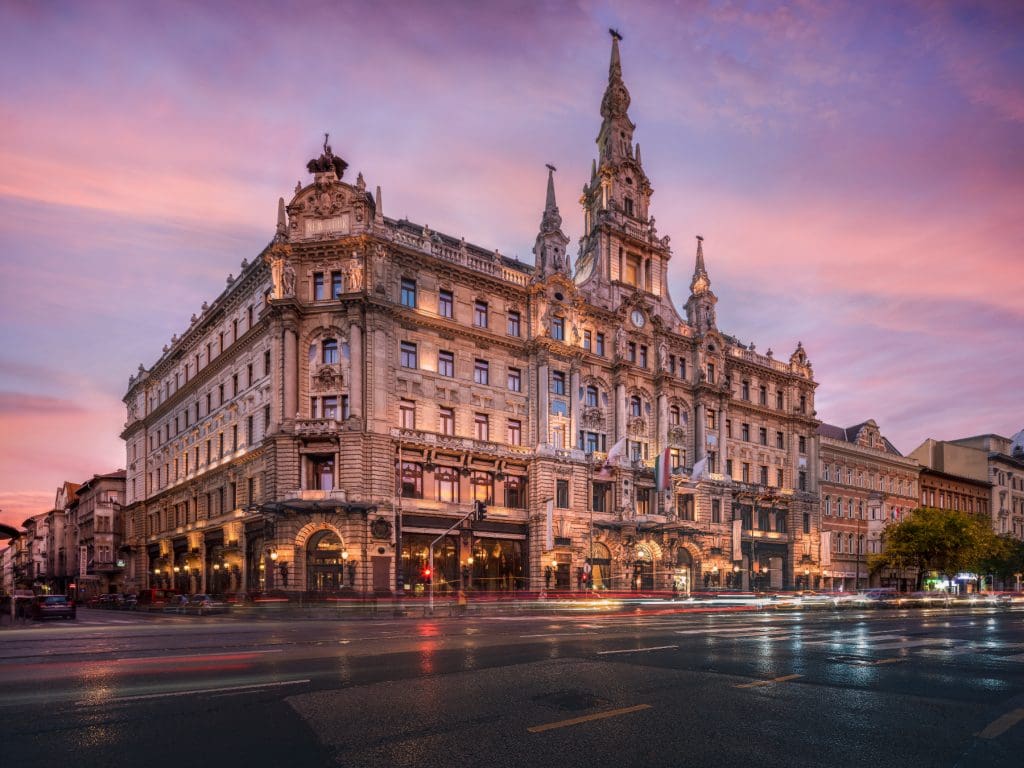
Fast forward to 2006, after all the traumas of the two World Wars and nearly half a century of communist rule, and the Boscolo group reinvented the building – which had first been a sports equipment shop, then a travel agency – as a luxury hotel. Fifteen years later the Anantura brand took it over, further investing to restore the building to its Belle Époque glory. The result is a five-star hotel with 185 rooms, numerous dining facilities – including the famous New York Café – and a basement spa.
All the accoutrements of luxury count for nothing if the atmosphere of the place is flat, if the staff seem uninterested. Here the service was unfailingly excellent, from the welcoming doormen to the polite and smiling men and women at the reception desk off the main lobby. Later, enquiries about places to visit and the best restaurants were dealt with smoothly and efficiently.
We planned to get to know the city well, so a comfortable room in which to relax our weary limbs at the end of a day’s walking and sightseeing was essential. For those with the means there are some sumptuous suites and rooms available – at the top end the two and three-bedroomed Presidential suites, along with the Ruby and Sapphire Presidential suites (all with butler service).
But our Premium Room on the fourth floor suited us just fine. It was a large space which featured a lovely king-sized double bed, large sofa and desk, and a most impressive marbled bathroom with a combined bath and waterfall shower. We were pleased to see reading lights on either side of the bed – not always a given even in the best of hotels.
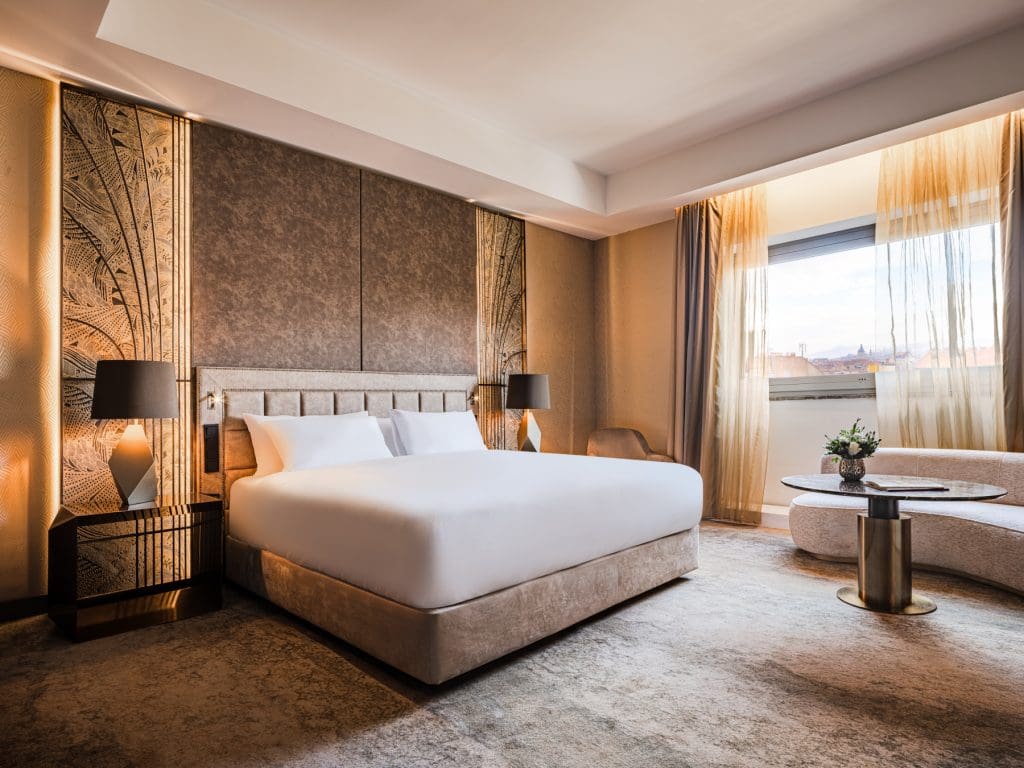
Dining at the White Salon
We were spoilt for choice with the hotel’s eating and drinking facilities. We took dinner on our first night in the White Salon restaurant, situated on the mezzanine level. ‘Casual’ dining is the order of the day, although given the splendid surroundings, the white tablecloths, and the tuneful string trio in the corner playing Hungarian folk songs, along with a variety of classics, we were glad to have dressed up.
The White Salon blends traditional Hungarian dishes with other European classics, so for the former the chicken paprikash, dumplings and cucumber salad was the obvious choice, and an excellent one it proved to be. Representing the latter, the squid, prawns and black mussels spaghetti in lemon butter sauce was equally satisfying.
For the first meal of the day the following morning we headed downstairs to the Deep Water Breakfast Room, a gorgeous looking space with tables spread out between terrazzo columns and gilded stucco. A splendid looking buffet was laid out in the middle, with a huge choice of hot dishes, freshly-baked bread and pastries, fruits, cheeses and granola. The Eggs Benedict off the served menu certainly hit the spot.
Suitably fortified, we were all set to walk the highways and byways of Budapest. We were fortunate that Eileen has Hungarian cousins, and one of the younger ones, our good friend Peter Benko, sacrificed a day’s work to be our guide and proudly show off his city.

A Day Tour of Budapest : Heroes’ Square
A vital place to start was Heroes’ Square, a vast boulevard and the symbolic heart of Budapest, its Trafalgar Square if you like – but with added style and monuments.
Here we gazed at the Nelson-like Millenary Monument, a 36-metre high pillar topped by a golden Archangel Gabriel holding the Hungarian crown and cross. At the base are statues of seven Magyar chieftains who lay claim to founding the country. Then on the giant colonnades either side are fourteen statues, a few representing the nation’s values and the rest of key rulers and statesmen – from King Stephen (the country’s first monarch) to Lajos Kossuth (renowned statesman and revolutionary in the independence wars of the mid-19th century).
Heroes’ Square is where the country collectively mourns or celebrates the big moments and the big people, such as in June 1989 when a crowd of 250,000 gathered for the reburial of Imre Nagy, Prime Minister at the time of the revolution in 1956 and ultimately executed by the Soviets for attempting to put Hungary on the road to independence.
Varosliget City Park
The impressive neoclassical Museum of Fine Arts lies on Heroes’ Square, but it was closed on the day we went, so we strolled into the neighboring Varosliget (City Park) which houses the baroque and gothic looking Vajdahunyad Castle – and opposite it, amongst the trees, one of the most intriguing yet sinister looking statues we had ever seen.
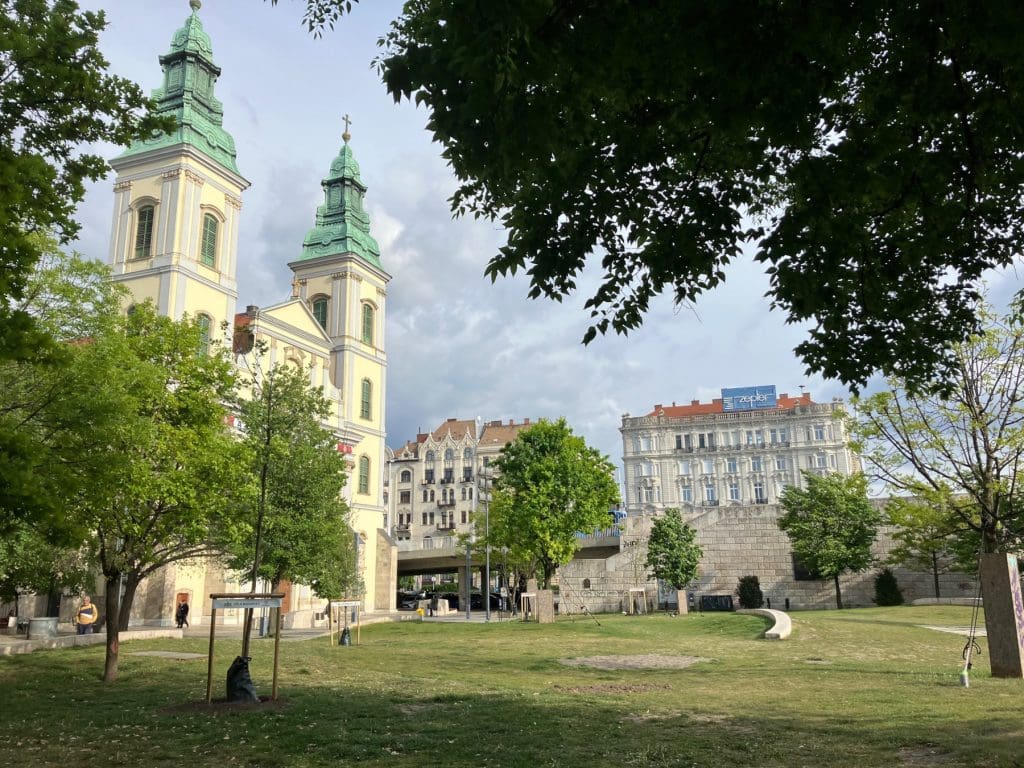
Peter recalled being very frightened as a child when first visiting the park and encountering ‘Anonymous’. It is a large statue of a hooded man – from the clothing, quite possibly a monk – apparently sprawled in an armchair, with a pen in his right hand. From a distance it appears headless but if you dare to go up close you will see a grim visage underneath the hood.
There is no consensus but some medieval historians will tell you that this statue is that of the mysterious chronicler who wrote the Gesta Hungarorum (The Deeds of the Hungarians), an account of the nation’s history written for King Bela III in the early 13th century. Legend has it that if you stroke his pen your writing skills will be enhanced. I leave you to be the judge of this writer’s efforts!
Jewish Quarter
Our exploration of Budapest’s turbulent 20th century history began in the Jewish quarter. In late 1944, as Hitler’s Holocaust enforcers turned their attention to Hungary, around 70,000 Jewish citizens of the city were herded into a hastily constructed ghetto, encompassing just a small 20-block area of the 7th district. Most men had been conscripted into labour battalions, so it was mainly women, children and old folk who were crammed into 162 blocks of flats, buildings designed for only 15,000 at most.
A 30-metre Memorial Wall, which marks the border of the 1944 ghetto, sits at the back of the courtyard at 15 Kiraly Utca. It’s a reconstruction – the original wall was pulled down in 2006 – but it’s still a poignant reminder of the suffering of its inhabitants, who soon afterwards would be sent on trains to the death camps. A plaque on the wall has a map of the ghetto, and the command from Moses to the Israelites in the Book of Exodus (13;8), ‘You shall tell your son…’
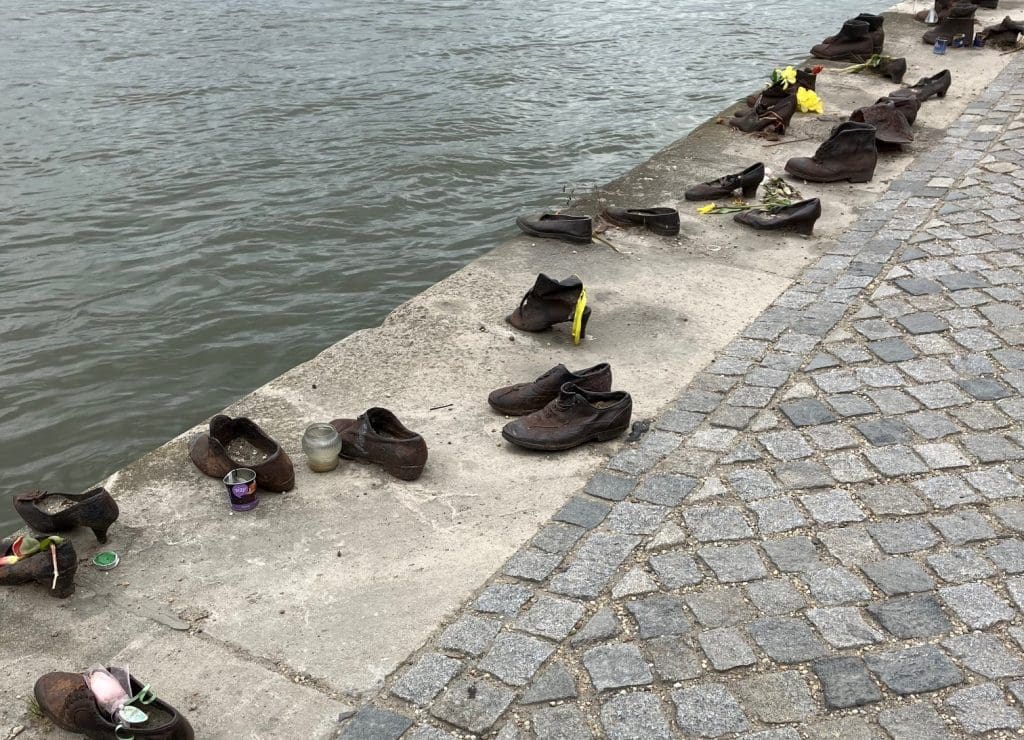
We had two other reminders of the awful experience of the Jews of Budapest in World War 2. One was underneath our feet from time to time – the stolpersteine or ‘stumbling stones’, small copper plaques laid into the pavement outside the houses of Jewish residents evicted from them and then murdered by the Nazis. One affecting inscription read, ‘Imre Balla lived here, born 1900, deported and killed in Mauthausen (concentration camp) in 1945’.
For the other we headed down to the bank of the Danube, a short walk from the Parliament building. There we saw the disturbing ‘Shoes on the Danube’ memorial to the Jews killed by the fascist Arrow Cross militiamen in 1944 and 1945. The concept of film director Can Togay, it features scores of sculpted shoes of that period, rusted and made of iron, sitting on the edge of the water – women’s shoes, men’s shoes, children’s shoes. The Arrow Cross murderers would force their Jewish victims to first remove their footwear – they were a valuable commodity, to wear, or sell on the black market – and then shoot them into the Danube, where the river would conveniently carry the bodies away.
Memory of such horrors should never be lost, but today Hungary’s Jewish population, many belonging to the Neolog community (combining elements of Reform and Orthodox Judaism), thrives – the Great Synagogue, the largest of its kind in Europe, the principal centre of worship. The Jewish quarter itself has been revived in recent times, previously dilapidated buildings turned into thriving ‘ruin’ bars and cafes, bringing a vibrant, bohemian feel to the neighbourhood.
House of Terror
From Nazism to Communism, one type of totalitarianism replacing another – and the people of Budapest had to endure the latter for a further forty years. Both periods are chronicled excellently in the absorbing House of Terror on Andrassy Street – a museum which, appropriately, was the HQ of the AVO, the secret police force that was the enforcer of Communist rule.
‘Hungary must be punished as an example to others’, Stalin asserted after the war. Small photographs of victims of Soviet rule line the walls outside the museum, while inside a compelling mix of film, audio and the written word tell the story of everyday life under Communism from 1945-89.
Particularly evocative is the drab room – desk and phone and little else – of Peter Gabor, the tailor’s apprentice turned ruthless head of the political police, the AVH. Down in the basement there’s a reconstructed torture chamber and cell, and moving testimony of some of those kept there. And in the courtroom, where scores of sham trials were held, a gripping film captures the prosecution of Hungarian premier Imre Nagy for ‘counter-revolutionary’ activity in the 1956 Uprising.
Memento Park
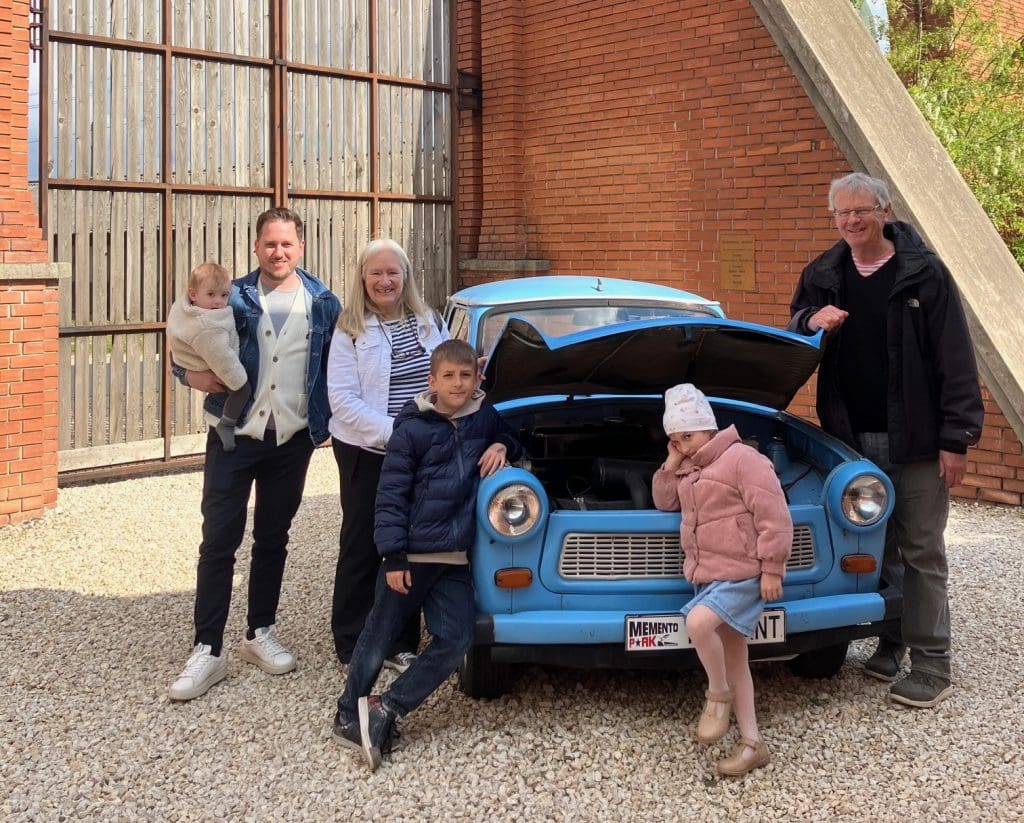
For our final journey back into Hungary’s Communist past Peter drove us to the outskirts of the city to Memento Park, situated next to the busy Route 7. There Peter’s wife Kitty, son Martin, daughter Camilla and new baby Max joined us for an unusual journey into the recent past.
This open air museum could be described as the dumping ground for all the major monuments that glorified the Communist ‘religion’ – or alternatively, a ‘shining example of how to culturally and elegantly display a sensitive subject’, as the guidebook asserts.
Either way, what you can see are forty-two monuments which once dominated the squares and streets of Budapest. Giant statues of Lenin, Marx and Engels frame the Classical façade of an entrance to the park, and just inside sits an ancient blue Trabant, the car which became a symbol of Communist life. Martin and Camilla particularly enjoyed clambering in and sitting at the steering wheel of this auto relic.
The park features a wonderful exhibit named ‘Stalin’s Boots’ – a grandstand which is a full-scale replica of the dais on which an eight-metre-tall bronze statue of Stalin once stood in the centre of Budapest. When the people rebelled in 1956, a crowd sawed the statue off at the knees and pulled it down. All that remained were the boots, which became a mockery of the dictator.
Of the 41 other statues some are familiar – more Lenin and Stalin – while others are of Hungarian Communist Party functionaries who have long since faded from the memory. The colossal ‘Monument to the Hungarian Socialist Republic’, cast in bronze in 1969, needs half a field of its own. It depicts a worker surging forward, brandishing a red banner in his left hand, crying out. Originally sited on the edge of City Park, where it looked like a giant rushing out from among the trees. It soon became a target of derision from Budapest residents; the statue became known as the ‘cloakroom attendant’, who was running after someone saying, ‘Sir, you forgot your scarf!’.
Cat Museum
On our final morning, we first opted for a complete change of pace and subject. Missing our cats Percy and Coco, we were lured to the Cat Museum on Vadasz Street. Here is home to eight cats of varying size and breed who you can try and pet – some are willing, others not – or merely observe.
Aside from the feline friends, the museum – spread over two floors – has on its walls paintings and photographs of cats, mainly in Budapest surroundings, and some rather kitsch cat versions of classic paintings (like the Mona Lisa and Van Gogh’s ‘Sunflowers’). You can sit and watch a splendid instructional film about the history of the cat. You can also learn about – and buy – the most exotic and expensive coffee in the world, civet coffee, made from the droppings of the wild breed of cat in South-East Asia.
Robert Capa Contemporary Photography Centre
Our last cultural outing took us to the Robert Capa Contemporary Photography Centre, which houses a permanent exhibition of 138 photographs from the camera of the great Hungarian photojournalist and war correspondent.
All Capa’s great work is here, from his first commissioned photograph of a fiery speech by Leon Trotsky in 1932 to his last, on the battlefield in Indochina in 1954, days before he was blown up by a landmine. This dashing, courageous man put himself right at the heart of the great events of the 20th century, the Spanish Civil War, Sino-Japanese War, World War 2 (he was the only photographer there in the first wave on D-Day at Omaha Beach), and he travelled to portray Stalin’s Russia with the great American writer John Steinbeck.
Everyone remembers the dramatic, iconic Capa photographs, such as the death of the Republican militiaman, but he could be just as adept in capturing the ordinariness, the simple pleasures of life away from war – like his photograph of children playing in the snow in Hankou, China, in 1938.
From Pest to Buda
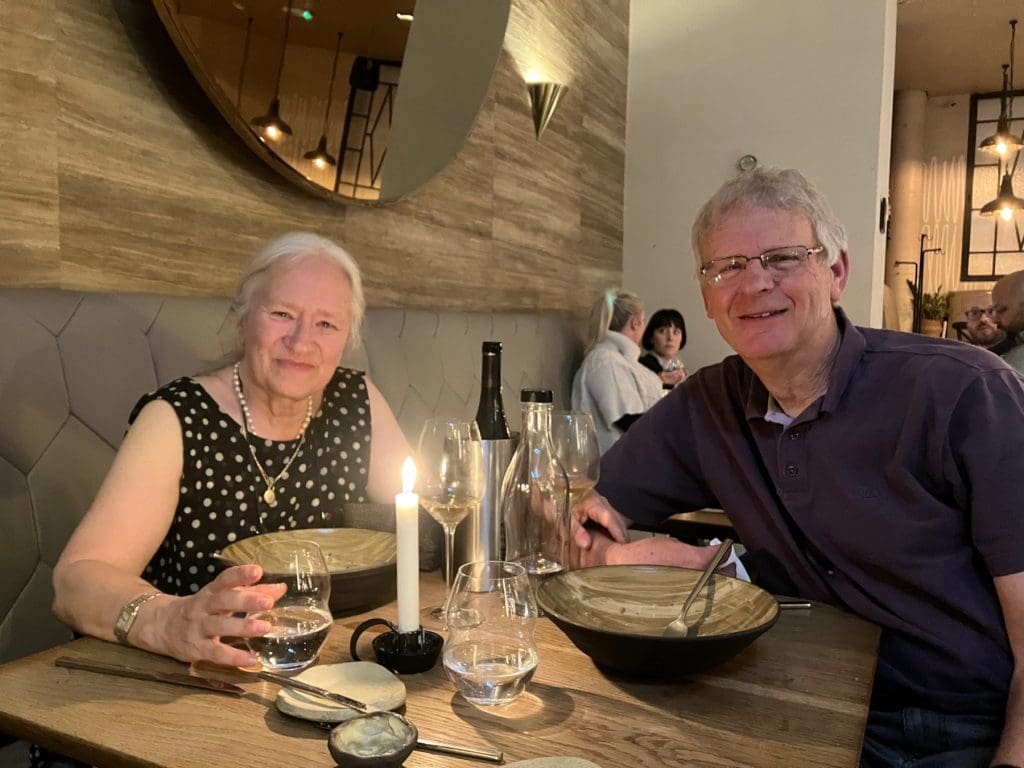
Buda, Pest and Obuda were united into one capital city, Budapest, in 1873. So far we had spent all our time in busy Pest, but on one night we did head across the river and up into the Castle Hill district for dinner with Peter and his family, his father Pista, uncle Mishi and other members of the Benko family.
We sat down to eat in the atmospheric Pest-Buda restaurant, which can trace its origins on this site back to 1696 when it functioned as an inn (it doubles as a hotel today, too, with eleven rooms). The red tablecloths are redolent of a French bistro, but the food is very hearty, home-style Hungarian, with fish and goulash soup, stuffed cabbage with minced pork and sour cream, and chicken paprikash with buttered noodles.
Afterwards our party enjoyed a delightful evening walk around the historic castle area, past the gorgeous 19th century neo-Gothic Matyas church, and the Fishermen’s Bastion, a white neo-Romanesque rampart with turrets and towers and the most spectacular view over the twinkling lights of Pest.
New York Café
We had covered a lot of ground in our stay but there was one place we had yet to visit, right on our doorstep. The New York Café was an integral part of the original building of the New York Life Insurance Company back in 1894, designed not as a work café but as a grand venue for all Budapest’s citizens.
It was a marvel of the Habsburg Empire, a coffee house that was an essential meeting place for the cultural community of this great city, writers, painters, actors, journalists. Inspired by the Italian Renaissance, it is fitted out with beautiful frescoed ceilings, sparkling Venetian chandeliers and gilded stuccos. Gazing upwards, you might be in the Sistine Chapel.
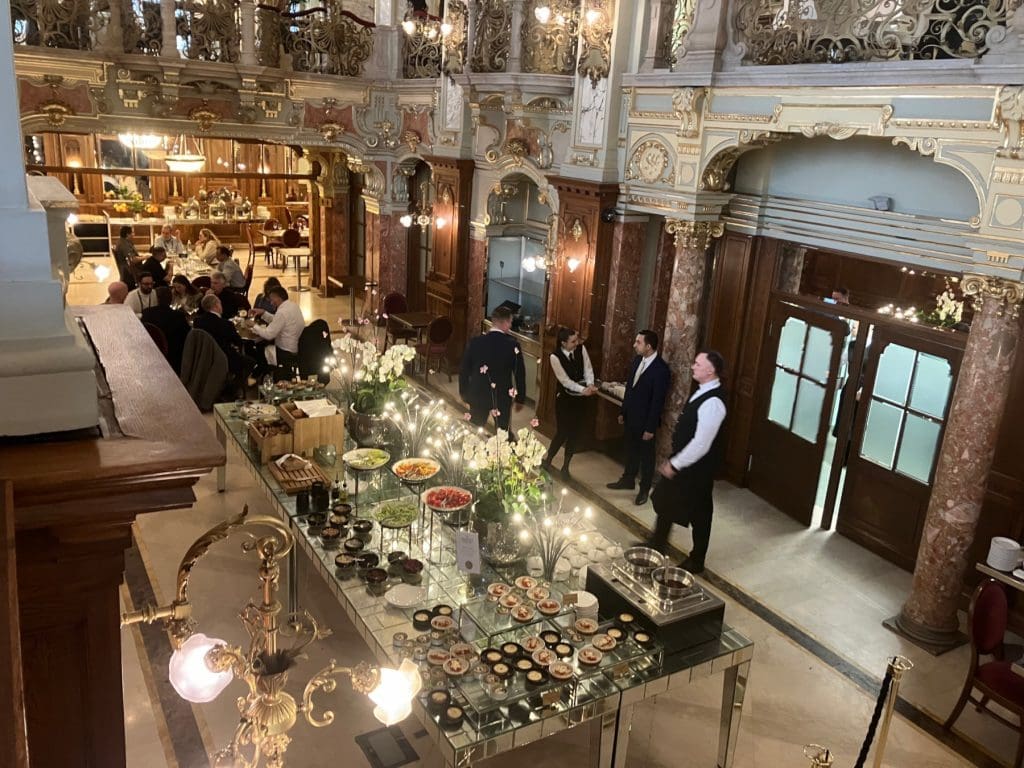
There were queues to get in on all the days of our stay at the New York Palace, proof of its enduring popularity. The tablemats tell the story of famous occupants down the years – we sat at the table once occupied by Ferenc Molnar, renowned novelist and playwright who was also a war correspondent in World War One. According to legend, it was Molnar who led a group of journalists down to the Danube one night where they symbolically threw the key to the café in the river, so it would never close.
If there was a minor regret in our stay, it was that Roger never got to see the tomb of another Ferenc – Puskas, captain of the great Hungarian football side of the 1950s and arguably the finest player (Lionel Messi aside) of all time. Puskas was honoured by being buried in the crypt of St Stephen’s Basilica, but on our excursion there we were told it was not possible to visit his tomb that day. A sight of the relic of St Stephen’s severed hand in the main body of the cathedral was intriguing, but scant consolation.
Beautiful Budapest – so much seen and admired, but so much left unexplored. We will be back again before too long for our next vacation in Hungary, that’s for certain.
